Distilling the Landscape [1997]

Our kitchen at Château-Noir
At the age of twenty I was in art school studying painting in Aix en Provence, France. I was enthralled by the landscape. I yearned to express the vivid color and contrasts I gleaned from the landscape in my pottery, but I had no idea as to how to represent the power and allusion to life found in Nature. Was it through some form of abstraction of shape, movement and touch or should it be through decoration and color?
I clearly remember a specific dinner at the Chateau Noir--at one time Cezanne’s studio and the subject of many paintings, now divided into apartments--at a big round table with a group of friends. We used a smattering of my pottery off of which we ate, drank, and served. We got involved in conversation about art and landscape and the use of color to define form and my mind drifted off, focused upon the table setting. My dream was to make an evocative setting of plates, some cups and a teapot to nourish my friends and to fill the table with pottery. Nineteen years later [1997], having achieved the technical ability, I am still exploring this aesthetic desire.
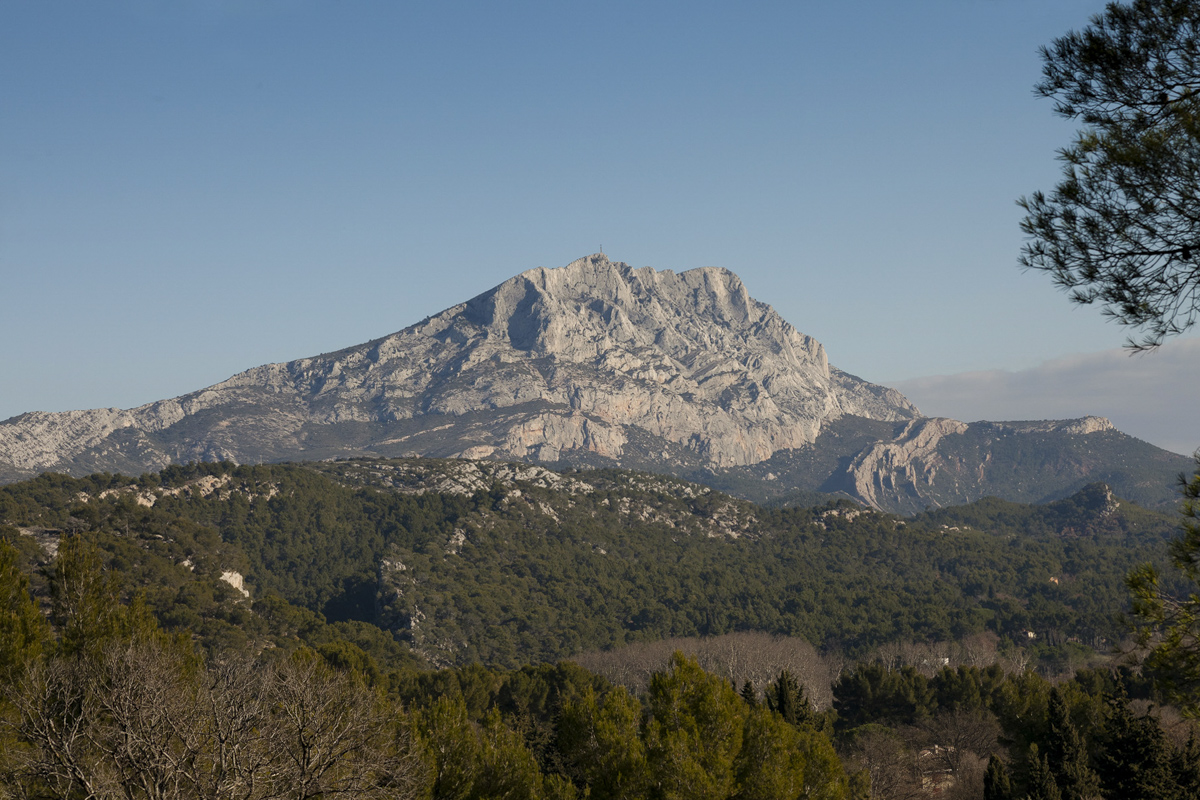
Mont Sainte-Victoire
Prior to my experience in France I had been aware of the paintings of Cezanne. I found that the watercolors spoke to me more than the oil paintings and I saw his place in art history as a precursor to abstract painting. From my first night in Aix when I drove with a friend out the route du Tholenet and saw the view of Mont Sainte-Victoire my perception of Cezanne changed. To compare the motifs actually used by an artist such as Cezanne to his paintings reminds the viewer of the choices, the quality of the gaze and the combinations that were employed. As the viewer gains an understanding of the purpose and vision of Cezanne, one perceives both how truthful and what variations from nature were chosen.
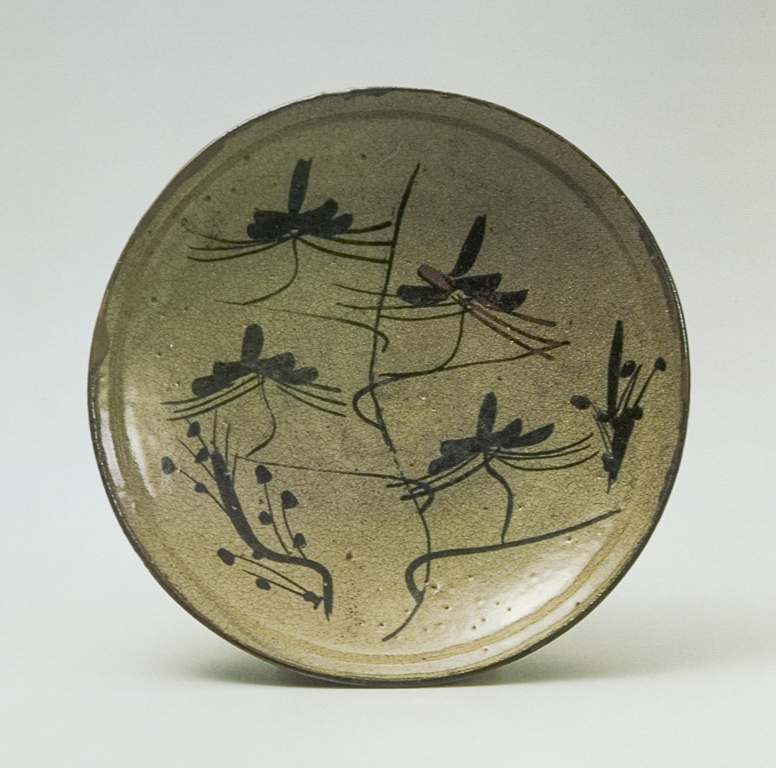
Underglaze Karatsu (Japan) Plate, early 17th C
with pine tree and plum designs
h 1.5" x w 7"
Tanakamaru Collection
I was struck in a similar way by iron brush painting on Karatsu plates. Before visiting Karatsu, Japan, I thought the representation of the pine trees seemed invented and strange. But on visiting there and seeing similar trees I gained a deeper understanding of the vision of these potters and how their brushwork was truthful yet at the same time distilled. These trees, as drawn, are a record of a specific time and place--neither a mere figment of imagination nor a habit of perceiving and representing.
The tea men of fifteenth century Japan knew how to read the landscape--both in nature and in the shading of ink painting as well as in the abstraction of glazes and shapes in pottery. Some pottery was seen as raw and sullen, barely touched with color while others are as spirited as a spring day. Stained and cracked slip and glaze was interpreted as a map showing a piece’s history of use.

Korean Bowl
As I adapt their insights and knowledge into the language of pottery, I seek not only a visual and tactile tension but also an emotional one. While ideas or inspirations can be derived from historical work, they are always implemented through my own available materials and a consciously limited choice of palette filtered through my artistic intuition, resulting in a modern expression of my local landscape. With a lack of artifice I aim to distill simplicity from complexity. The goal is to appeal to the senses with the same variety, directness, and power that one finds in nature.
In late ninth century China the poet Xu Yin was inspired by pottery and he drew contrasts among the varieties of Celadon--some fresh and youthful, others far more weathered: some greens evoke feelings of the tenderness of new growth and the renewal of life and youth, while other greens remind us of ancient lichens, clinging to rock, yet ever growing.
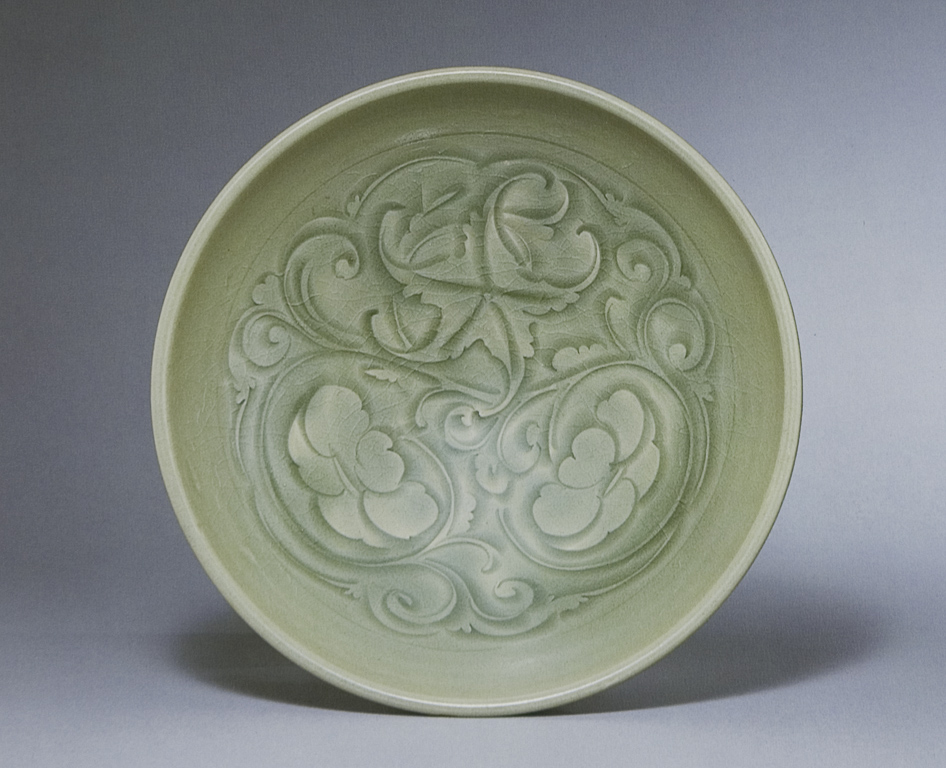
Chinese Celadon
In the same way I seek poetic combinations in my pottery by weaving together all the available elements of the process, for example, the choice of clay, throwing or forming, finishing, how slip is applied, thick or thin glaze and choice of firing. Each aspect of the process represents many choices and many opportunities for expression. How they are all balanced and employed creates infinite combinations, some perhaps, which may impart a sense of age and roughness or may express grace and youth. The allusions of pottery serve to enhance and deepen the user’s experience.

Storage Jar, 15th C Shigaraki, Japan
h 18" w 16"
In my studio I aim to find indigenous interpretations of the spirit found in the Virginia landscape. A great number of aesthetic choices are made in creating shapes and decoration. Yet I feel I must bridge the particular and emotional attachment I have of this specific time and place with a broad enough conception so as to capture something elemental. I photograph, draw, paint, and collage in the search to find an appropriate means of simplification and representation without stooping to create a literal imitation of my landscape.
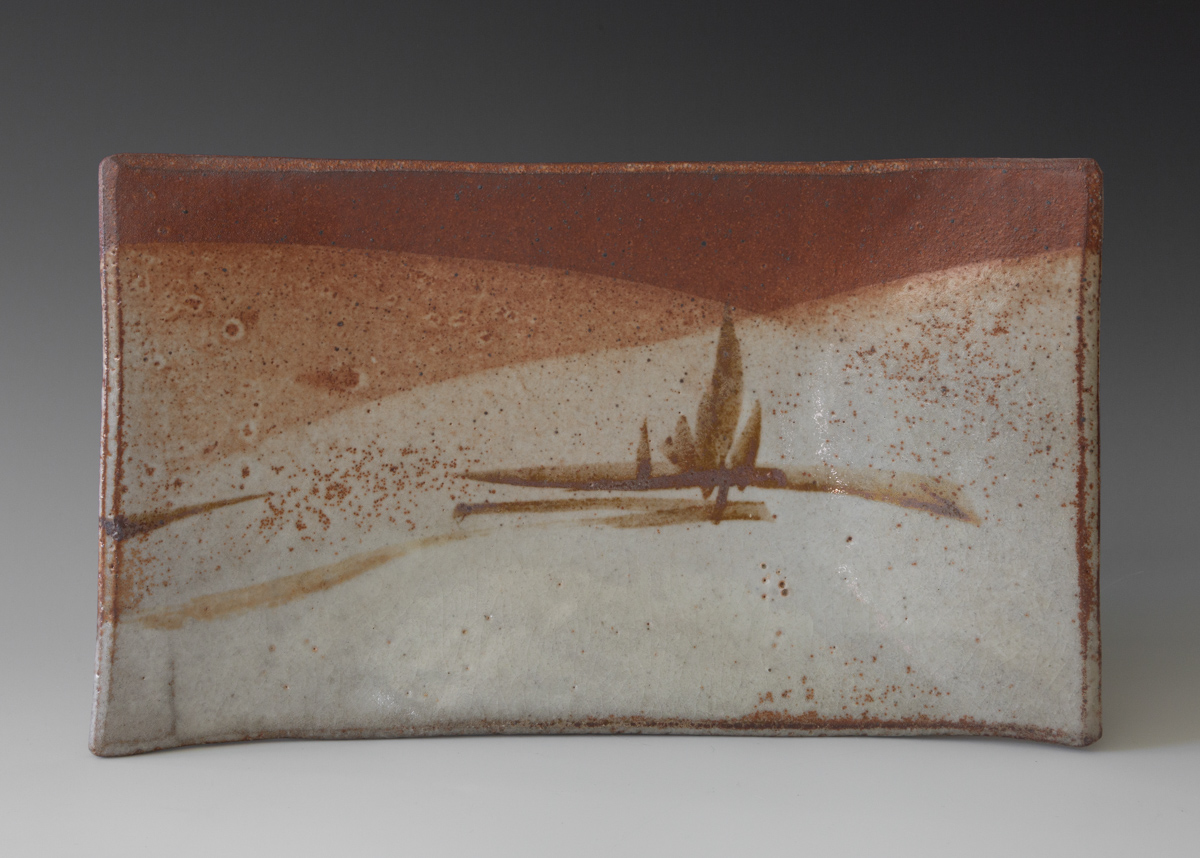
Landscape Vista Plate, 1983, Catherine White
There was a time when I tried to represent long vistas on small pots [above Shino glazed plate], yet today the focus of my gaze gets tighter and tighter. More recently I look to translate single leaves, blades of grass, or acorns with patient and passionate observation that transforms nature and relates it to the shapes and decoration of my pottery.
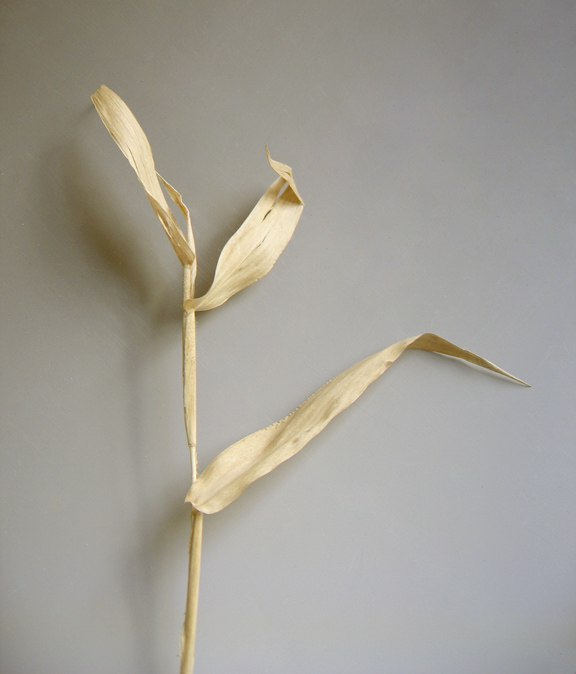
Deer Tongue Grass
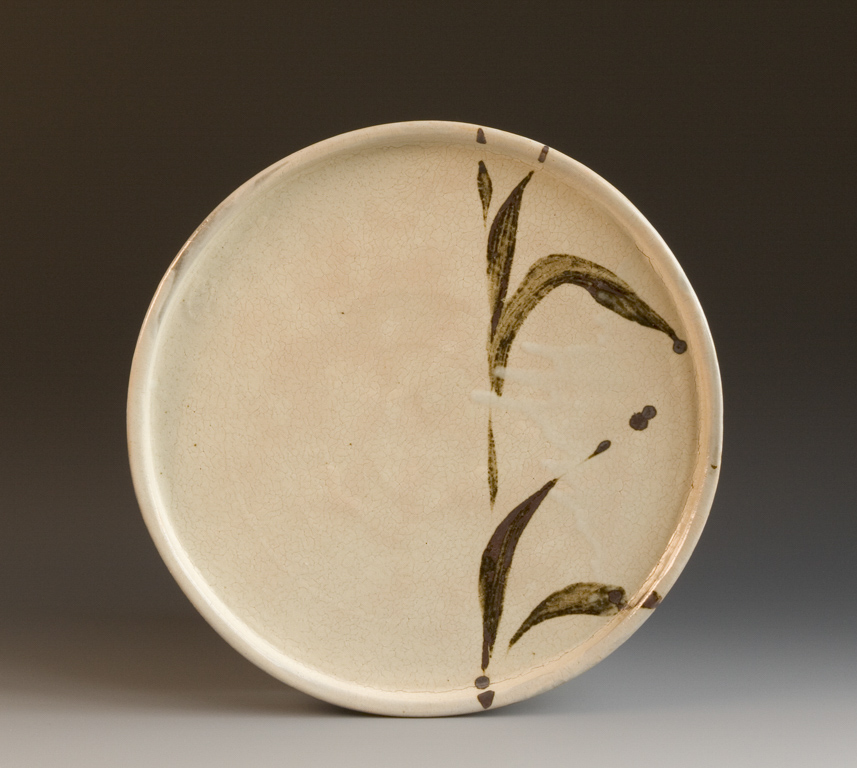
Deer Tongue Grass Plate, 1990's, Catherine White
The initial impression of a landscape is often of a repeating element, grass for instance, in a field. Closer inspection transforms the repetition into nuanced patterns and rhythm. Series and sets of pottery exhibit this same transformation of repetition into pattern and individuality. Repeating a particular form does not result in identical pots. While to the untrained eye they may initially appear to be identical, closer inspection reveals that each is idiosyncratic and unique. If however, a potter leans purely on the concept of what is repeatable, then the form thus achieved often represents the lowest common denominator.
The alternative is to explore the realm of exactly which qualities of pattern and rhythm can create an aesthetically cohesive series. Producing sets can be a fascinating challenge when mechanistic duplication is replaced by an aesthetic thread that ties the pieces together. I imagine the process to be similar to being a choreographer for a chorus of dancers. There is a different kind of impact with six similar bodies expressing movements than with one.

Square Vase with Sugar Cane Pattern, Hamada Shoji circa 1960
The mere acceptance of variations within a repetitive process is insufficient. Janet Koplos, in a recent article on Mingei, said that "the Mingei celebration of unselfconsciousness relied on Buddhist ideas and in addition the Buddhist practice of accumulating merit through repetition." The folk art approach as expressed by Yanagi was not one of artistic mood or thought but one born out of sweat uninformed by artistic ambition. Thus, Mingei ceramics were usually decorated with standardized motifs. Such craftsmen often must have worked by rote—the motif became abstracted through process rather than vision.
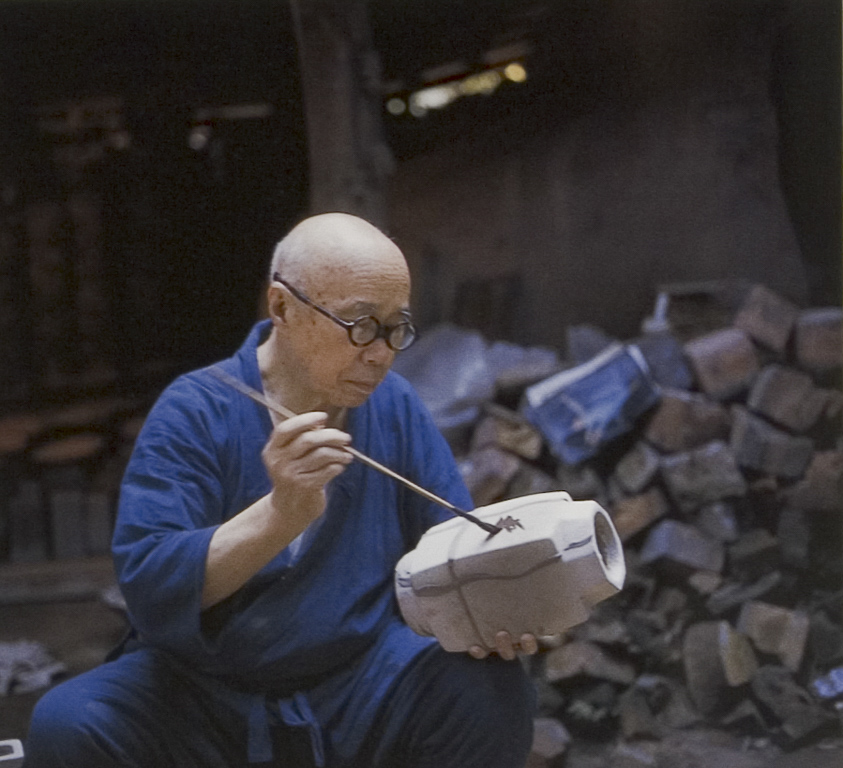
Hamada painting his sugar cane motif
I feel the need to go another step by questioning my innate attraction for repetition. I strive for a balance between the feeling of momentum that comes with working in a repetitive series and the inertia of assessment—determining whether one’s conceptual ideas have been achieved. Somewhere in the revolving process of momentum and assessment, there is an aesthetic tension between the uncontrolled and the controlled.
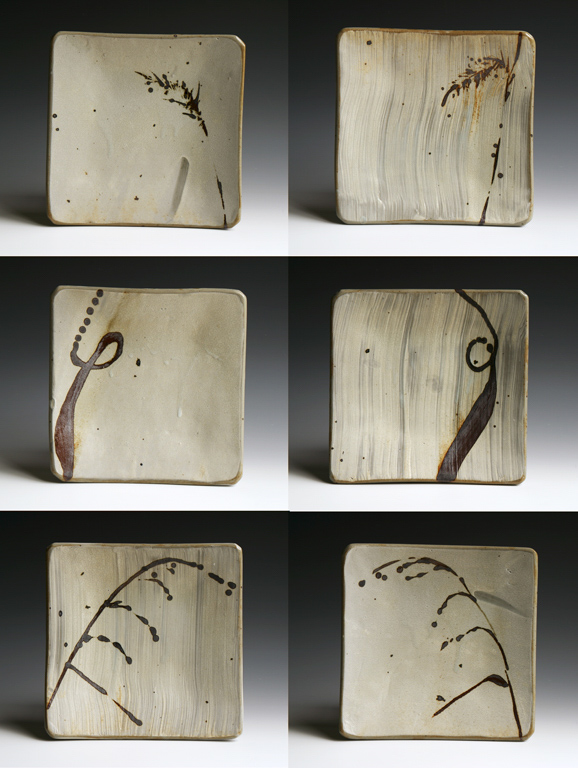
Grass Portrait Plates, early 2000's, Catherine White
Finding balance is a delicate process and one that is not motionless, given that the elements are always shifting. Although we sometimes must be our most severe critic, we must also be able to generate momentum and joy; we must enable ourselves to be carried away by the process. Creativity requires change.
Yet in the other realms of one’s life, change is all around us and it often seems undesirable. I live in what was once rural Virginia; irregularly, patches of countryside are quickly becoming suburban. I encounter people constantly struggling with changes in their landscape, perhaps new houses springing up everywhere or growing treees and hedgerows altering views. As parents many of us struggle with constant change; some days the adaptation required to keep up with a moving, maturing target seems more than one can bear. I have so often heard people exclaim, "What a cute baby; don’t you just wish that you could keep them like that forever?" Well, the answer is "not really."
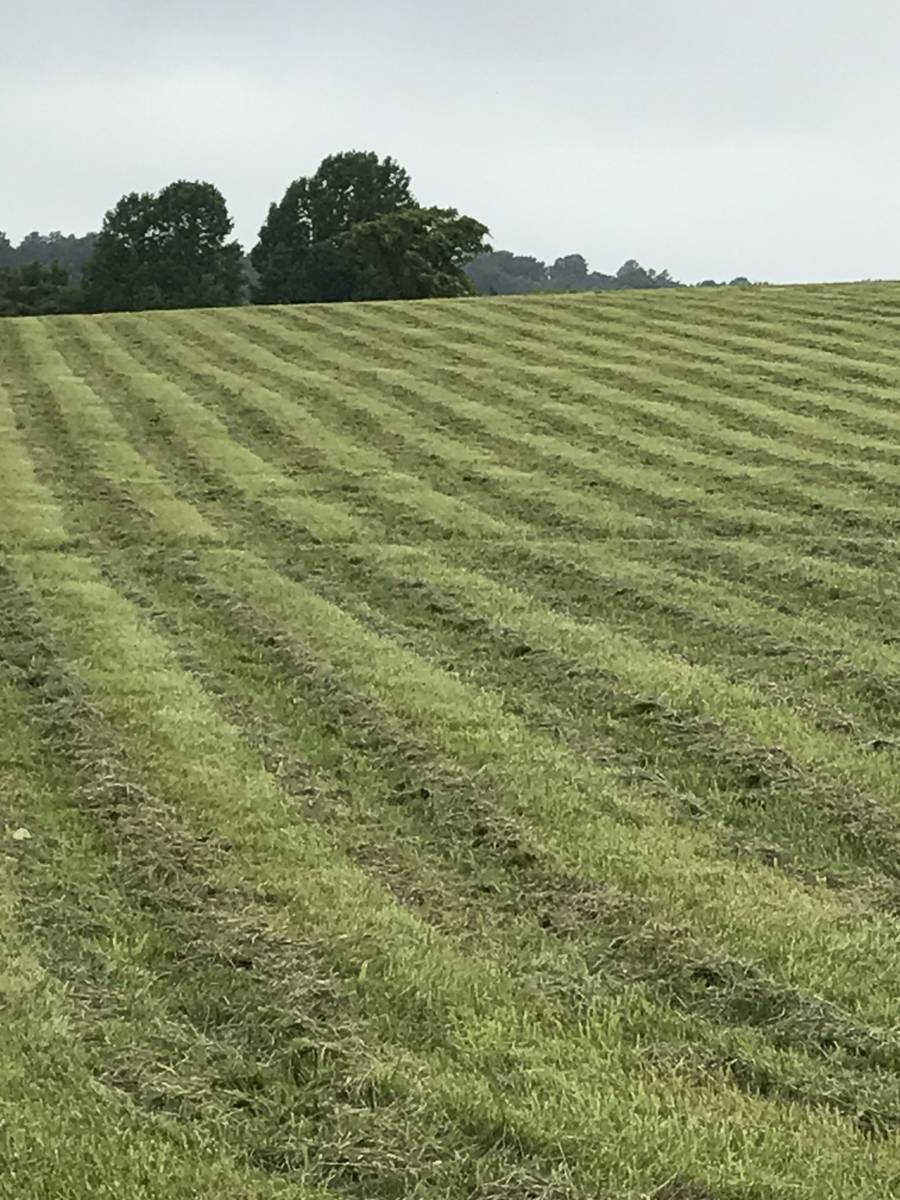
Our neighbor's mowed field
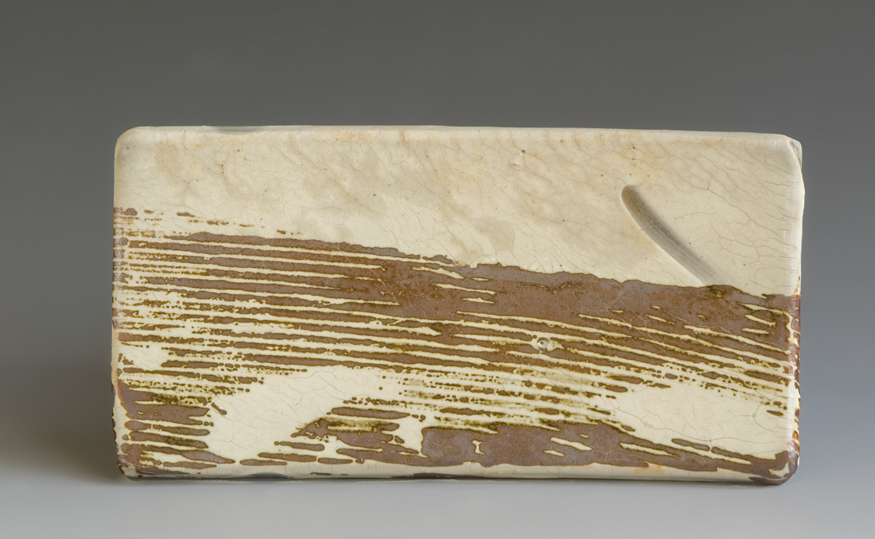
Meadow Plate, 1990's, Catherine White
In art it is crystal clear that evolution is essential for success. If I am no longer changing then a subtle shift has occurred; I have crossed the line into mechanistic replication. I am no longer reacting to the essence of the expression of an idea, but conforming to what is reproducible. I have lost the life force that I am trying to render. As my work changes or develops it is not about novelty for its own sake but about avoiding stagnation.
My experiments in imaginatively interpreting the landscape challenge my habitual ways of looking and creating. It involves an acceptance of risk and a leap of faith that I can find a different interpretation that will "speak." I must have faith that a circular process–in which intuitive making alternates with critical judging—avoids digging a circular rut, but spirals into new insights.
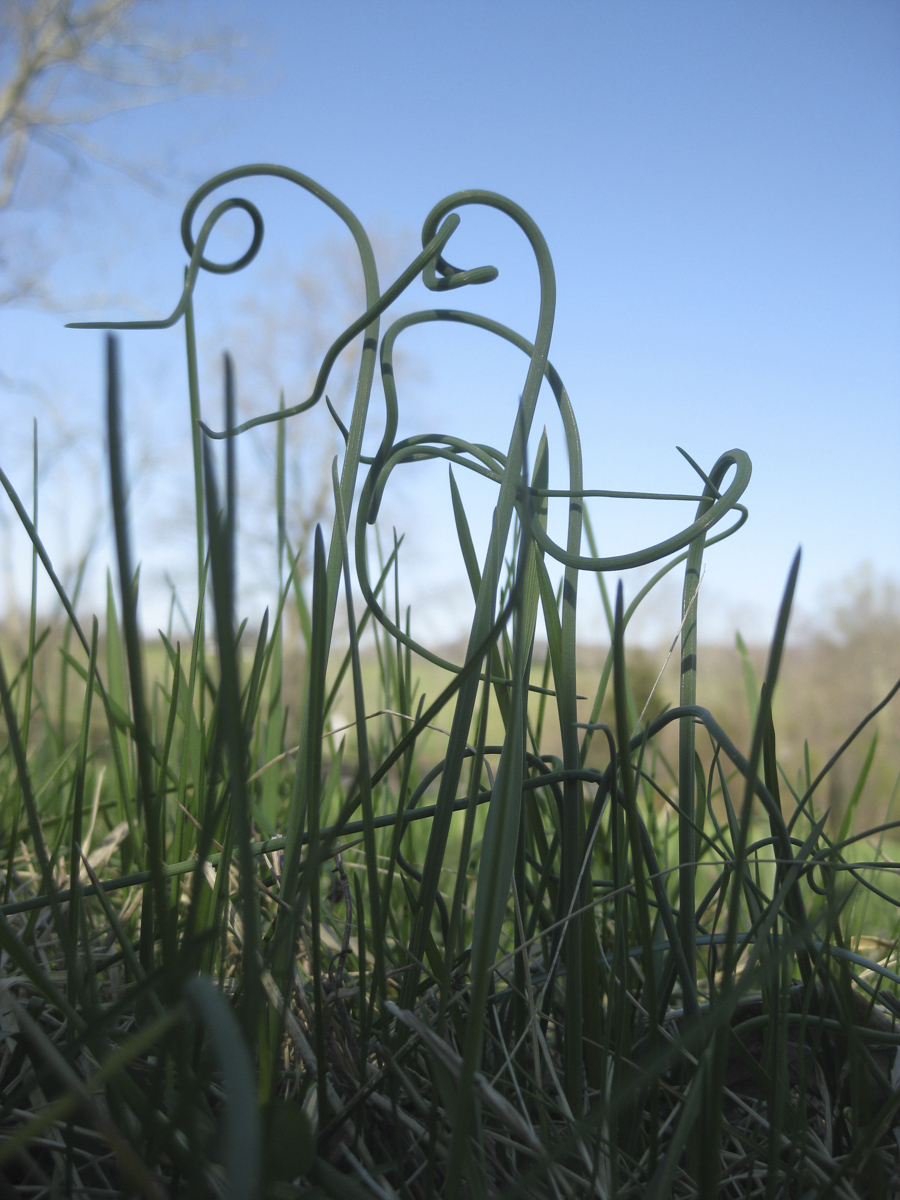
Onion Scapes
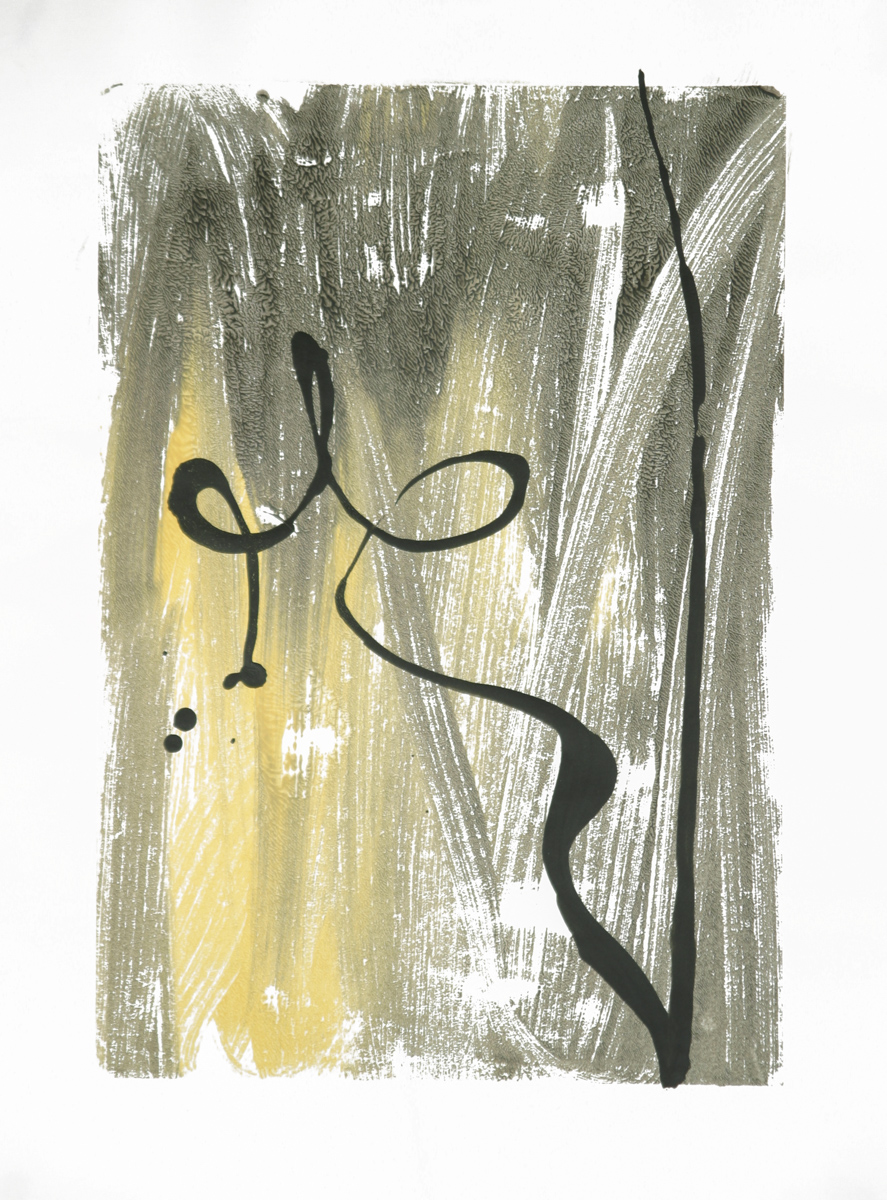
Peace Poster, 2002
H 22.5" x W 16.5"
Catherine White
Our culture often describes things in too simplistic terms—there is the romantic myth of the maverick artist whose productivity results from being irresponsible and crazed. Or there is the craft world myth of the self-employed business person who embodies a puritanical work ethic; a multitude of pieces are made in order to arrive at a handful that are fully expressive.
Actual paths are far more complex, a combination of many possibilities. A strong internal compass is necessary to navigate a personal path through the many alternative models of "craftsman" and "artist." I aim for pottery that resonates and expresses itself through use by creating new metaphors that combine Cezanne’s sense of abstracting from Nature, the Japanese Teamen’s sense of ceramic associations, and the inspiration of the Chinese poet. I continue to refine my work so it can be felt as landscape, perhaps capturing the regenerative forces of spring or the power of dried grass to withstand the fierce elements of winter.
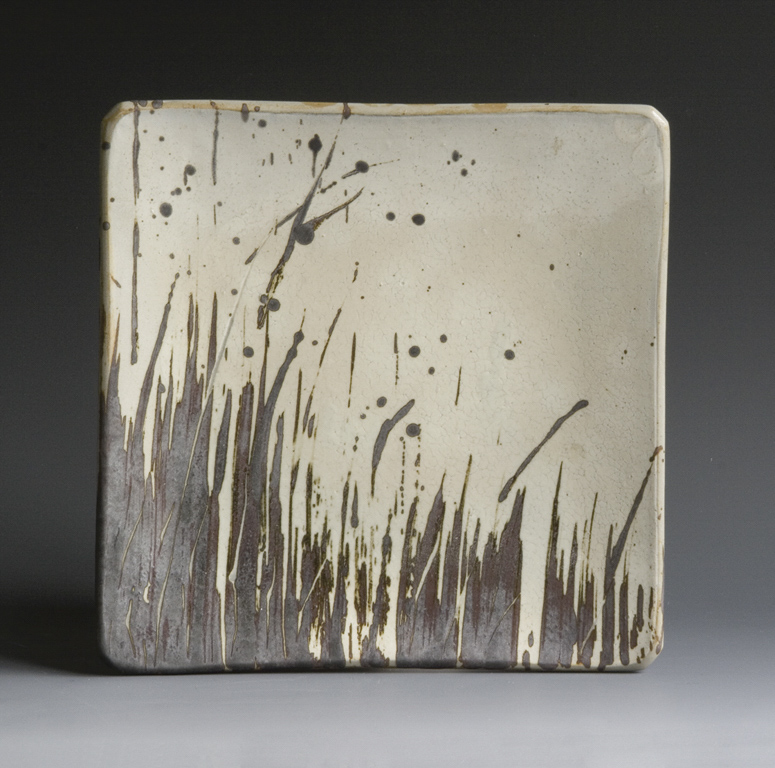
Field of Grass Plate, 1998, Catherine White